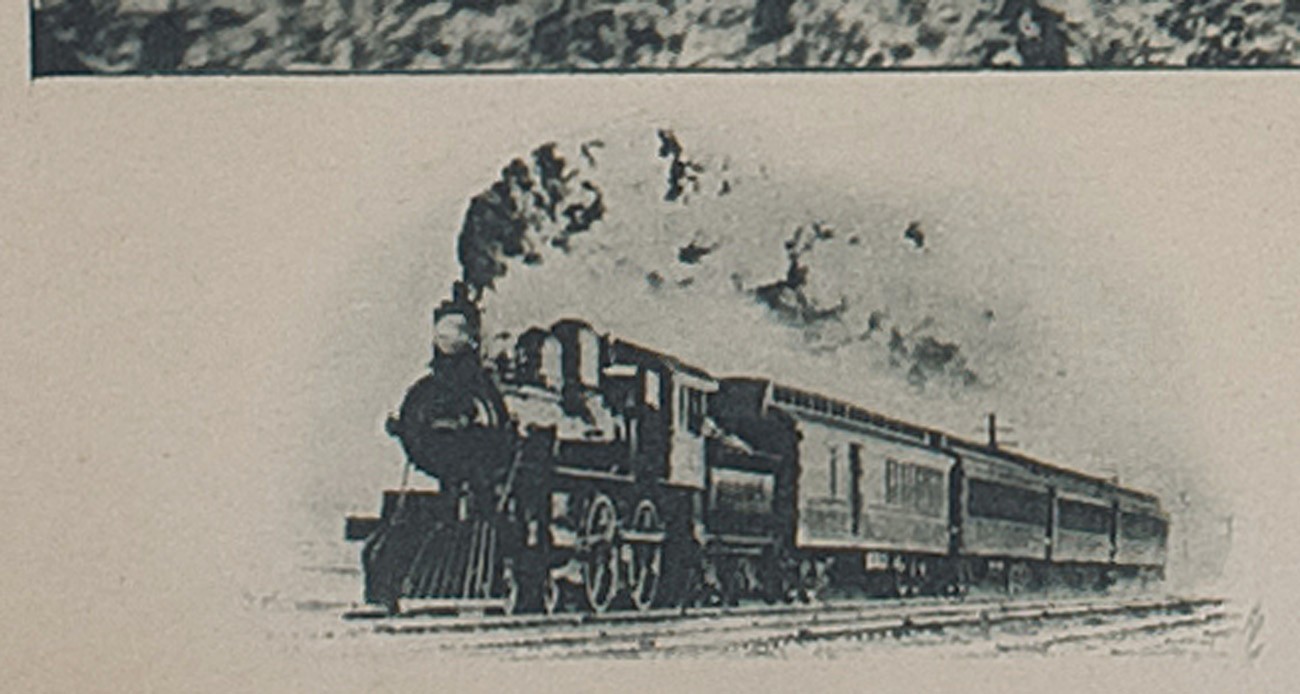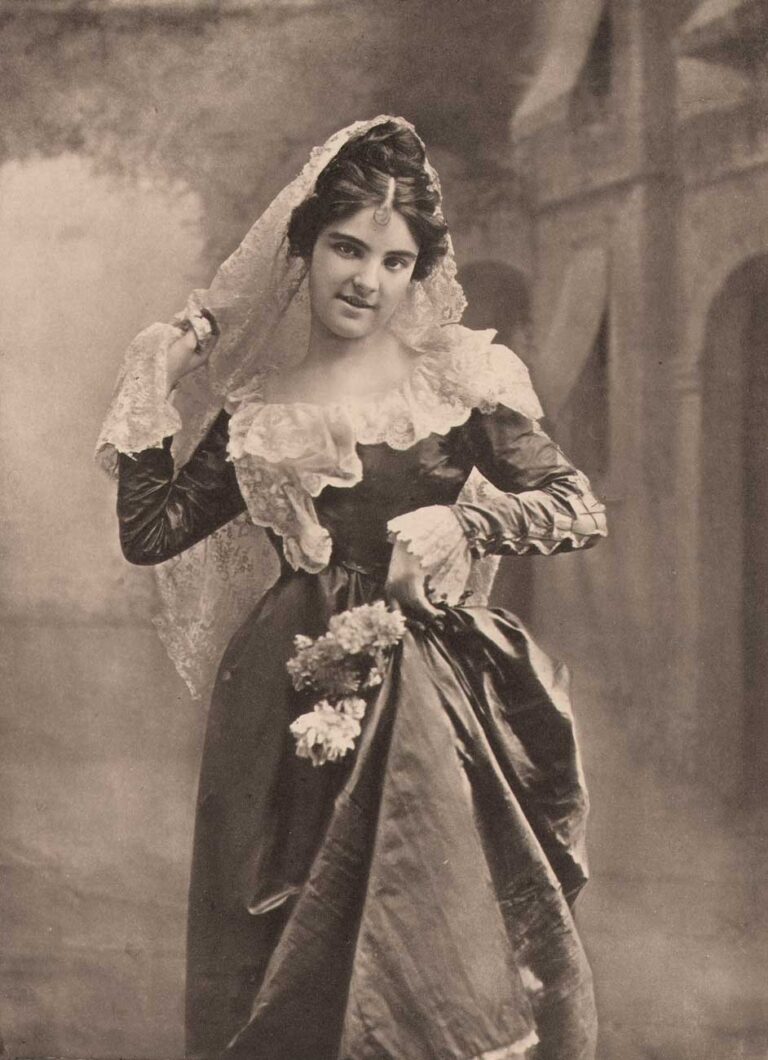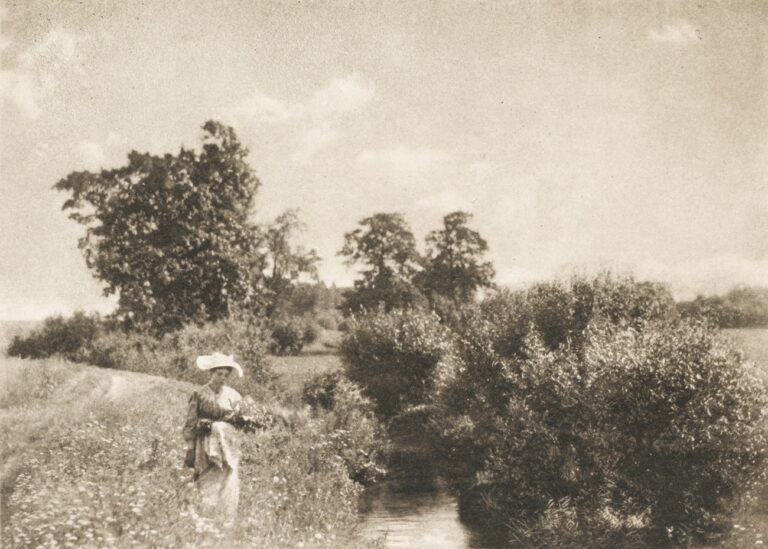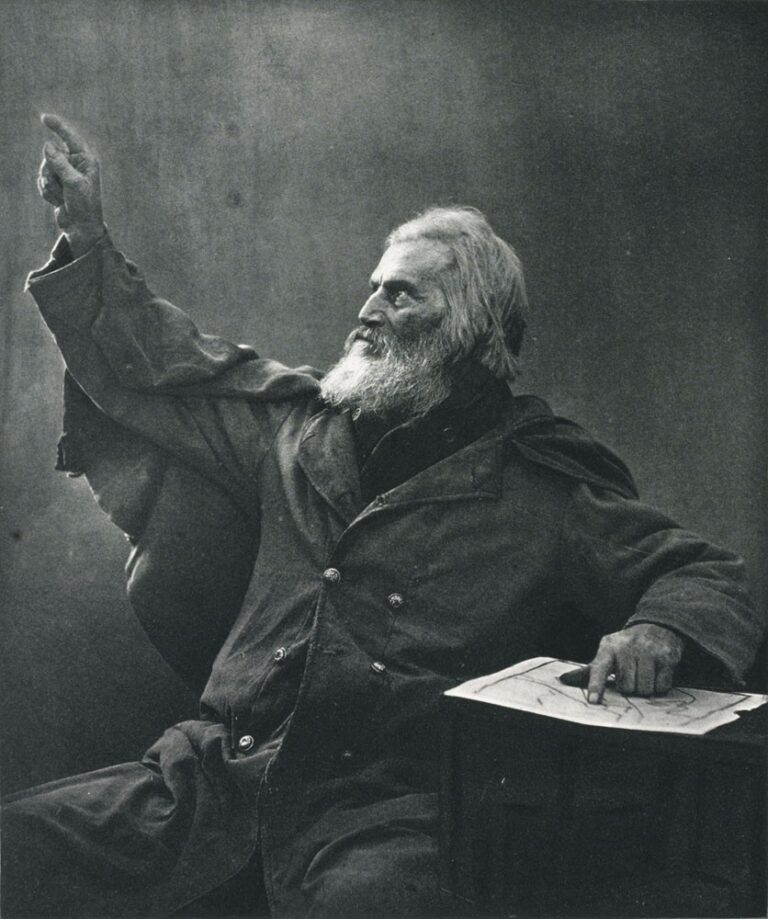
The Empire State Express
Please see associated image on PhotoSeed for particulars on this remarque by Yates: Old Spring at West Point | Kosciuszko’s Garden. The following is background on the photograph and Yates. (b. 1841)
Locomotive remarque by A. P. Yates
One of the fascinating features of this over-sized photogravure impression is the inclusion of a photographic remarque showing a railroad locomotive pulling a series of cars and belching a trail of smoke. Seen at the lower left corner in the print margin and uncredited, this site had determined it shows the famous “Empire-State Express” locomotive of the New-York Central Hudson-River Railroad. A.P. Yates, their official photographer, had photographed the train on the third day of its installation in November, 1891, near Syracuse “when running at 60 miles per hour on 65-lb. rails before the entire main line had been relaid with 80-lb.” (6.) The article further states the Empire State Express was “the fastest long distance train ever attempted.”
An account of the photograph by Yates, who first took up railroad photography around 1887 follows:
“On the third day of the run of the Empire State express in October, I891, the conditions all being favorable, I made the attempt to secure a picture of the fastest train in the World. Having obtained use of an additional camera from a friend, in order to have three outfits, I proceeded some distance west of Syracuse, taking with me a porter named ‘Doc.’ to help me in operating the third camera, if I needed his services. That day, locomotive No. 862, Engineer Charles Hogan, made the first nine miles after leaving the Syracuse station six minutes late, in eight and one-half minutes. It was while running at this high rate of speed, which was fully sixty miles an hour, that two good negatives were secured. An amusing incident in connection with this occasion is well worth relating. The cameras were set up in position some fifteen or twenty minutes before-hand in order to have everything in readiness. During that time I drilled ‘Doc.’ and told him what he should do, which merely consisted in pressing a bulb when I gave the proper signal. On came the express, and as it thundered by, with dust flying in the air, I gave the signal and shouted. But ‘Doc.’ shouted as loud as I did, but so rattled was he by the experience that he forgot to press the bulb, and could only exclaim with wonderment, ‘How like the devil she went.’ Fortunately the results of the two cameras I operated were good, so that ‘Doc’s’ failure did not embarrass me. ‘Doc’s’ experience as an assistant was short lived. The picture obtained on that day has since become famous, and has been viewed by thousands, not alone on this continent, but abroad. The negative, with a cut-out of two and one-half inches by three and one-half inches, was reproduced and enlarged five by eight feet, thus making the largest bromide print ever made. That was the large picture you saw in the New York Central exhibit, and also in the Liberal Arts building at the World’s fair at Chicago in 1892 I believe it was awarded a medal by the Fair Commissioners, but I have not yet received it. The picture has since been reproduced and published in magazines and public prints in this country and in Europe, and while it is one of my earlier specimens of instantaneous photography, it is considered by critics one of the finest extant.” (7.)
6. excerpt: Bulletin of the International Railway Congress (English Edition): Brussels: published by P. Weissenbruch: January, 1899: Vol. XIII: no. 1: p. 7. (photograph of train, indicating it is Locomotive No. 862, appears on p. 11) Arthur P. Yates: b. 1841. The reference to November is incorrect: should be October. (inaugural run of train was on Sept. 14, 1891)
7. excerpt: Railroad Photography: in: New York Railroad Men: New York: February, 1896: pp. 106-07



